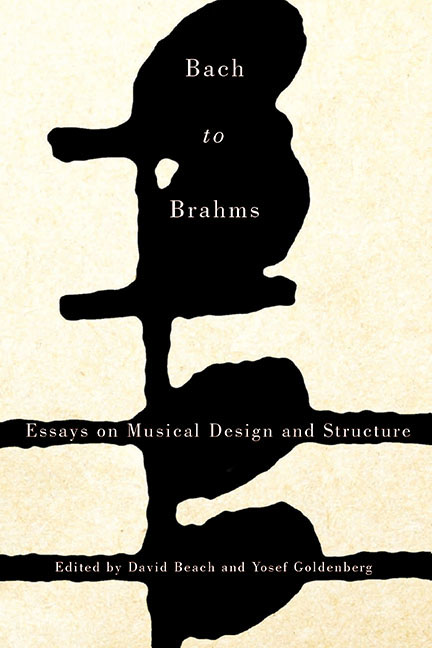Book contents
- Frontmatter
- Dedication
- Contents
- Introduction
- Part One Structure and Design
- Part Two Focus on Motive
- Part Three Structure and Design II
- 11 The “Pseudo-Einsatz” in Two Handel Fugues: Heinrich Schenker's Analytical Work with Reinhard Oppel
- 12 Formal Fusion and Its Effect on Voice-Leading Structure: The First Movement of Beethoven's Opus 132 Revisited
- 13 Indistinct Formal Functions and Conflicting Temporal Processes in the Second Movement of Brahms's Third Symphony
- 14 The Interaction of Structure and Design in the Opening Movements of Schubert's Piano Trios in B-flat Major (D. 898) and E-flat Major (D. 929)
- 15 The Suspenseful Structure of Brahms's C-Major Capriccio, Op. 76, No. 8: A Schenkerian Hearing
- List of Contributors
- Index
13 - Indistinct Formal Functions and Conflicting Temporal Processes in the Second Movement of Brahms's Third Symphony
from Part Three - Structure and Design II
Published online by Cambridge University Press: 14 March 2018
- Frontmatter
- Dedication
- Contents
- Introduction
- Part One Structure and Design
- Part Two Focus on Motive
- Part Three Structure and Design II
- 11 The “Pseudo-Einsatz” in Two Handel Fugues: Heinrich Schenker's Analytical Work with Reinhard Oppel
- 12 Formal Fusion and Its Effect on Voice-Leading Structure: The First Movement of Beethoven's Opus 132 Revisited
- 13 Indistinct Formal Functions and Conflicting Temporal Processes in the Second Movement of Brahms's Third Symphony
- 14 The Interaction of Structure and Design in the Opening Movements of Schubert's Piano Trios in B-flat Major (D. 898) and E-flat Major (D. 929)
- 15 The Suspenseful Structure of Brahms's C-Major Capriccio, Op. 76, No. 8: A Schenkerian Hearing
- List of Contributors
- Index
Summary
In Brahms's sonata-form movements we often encounter situations where different musical parameters do not articulate the movements’ temporal unfolding in a similar way. Rather, there are moments when one parameter draws a boundary, while others may still be in the middle of an ongoing process. Peter H. Smith has recently discussed this aspect of Brahms's music in great detail, using the term “dimensional counterpoint” when referring to the interaction and occasional disparity among various musical parameters. Smith makes distinctions between three primary parameters: thematic design, key scheme, and tonal structure, the first two being associated with traditional views on musical form, the last with Schenkerian voice-leading structure. In Brahms's music it is common, Smith argues, that the formal and structural layers do not articulate the music's unfolding in a similar fashion. This is a case study on such disparity, examining how different musical parameters organize the slow movement of Brahms's Third Symphony.
The subtleties of this movement's temporal unfolding are not limited to incongruence of boundaries in its various musical parameters, however. In addition, the precise function of several individual formal sections is difficult to assess; the beginnings of some formal sections may suggest one function, and their endings a different function. Janet Schmalfeldt has convincingly argued that these kinds of revaluations constituted a significant compositional resource in nineteenth-century music, and she uses the term “becoming” for describing such functional reinterpretations. Together with “dimensional counterpoint,” the idea of “becoming” creates a multilayered web of associations in the Brahms movement.
An Overview
In its outlines, the movement follows the principles of sonata form, albeit in a highly unconventional manner. Walter Frisch's formal analysis gives us a good starting point for considering some of the movement's formal idiosyncrasies: “The Andante has essentially a sonata-form structure with a full exposition (first theme, m. 1; second theme, m. 41; closing group, m. 63). There is no separate development section; rather there is what might be called a developmental extension added to the closing group from m. 71. The recapitulation, beginning at m. 85, is exact or literal until m. 108, when it too sprouts an extension in place of the original second theme. The coda, based on the first theme, begins at m. 122.”
- Type
- Chapter
- Information
- Bach to BrahmsEssays on Musical Design and Structure, pp. 225 - 238Publisher: Boydell & BrewerPrint publication year: 2015



